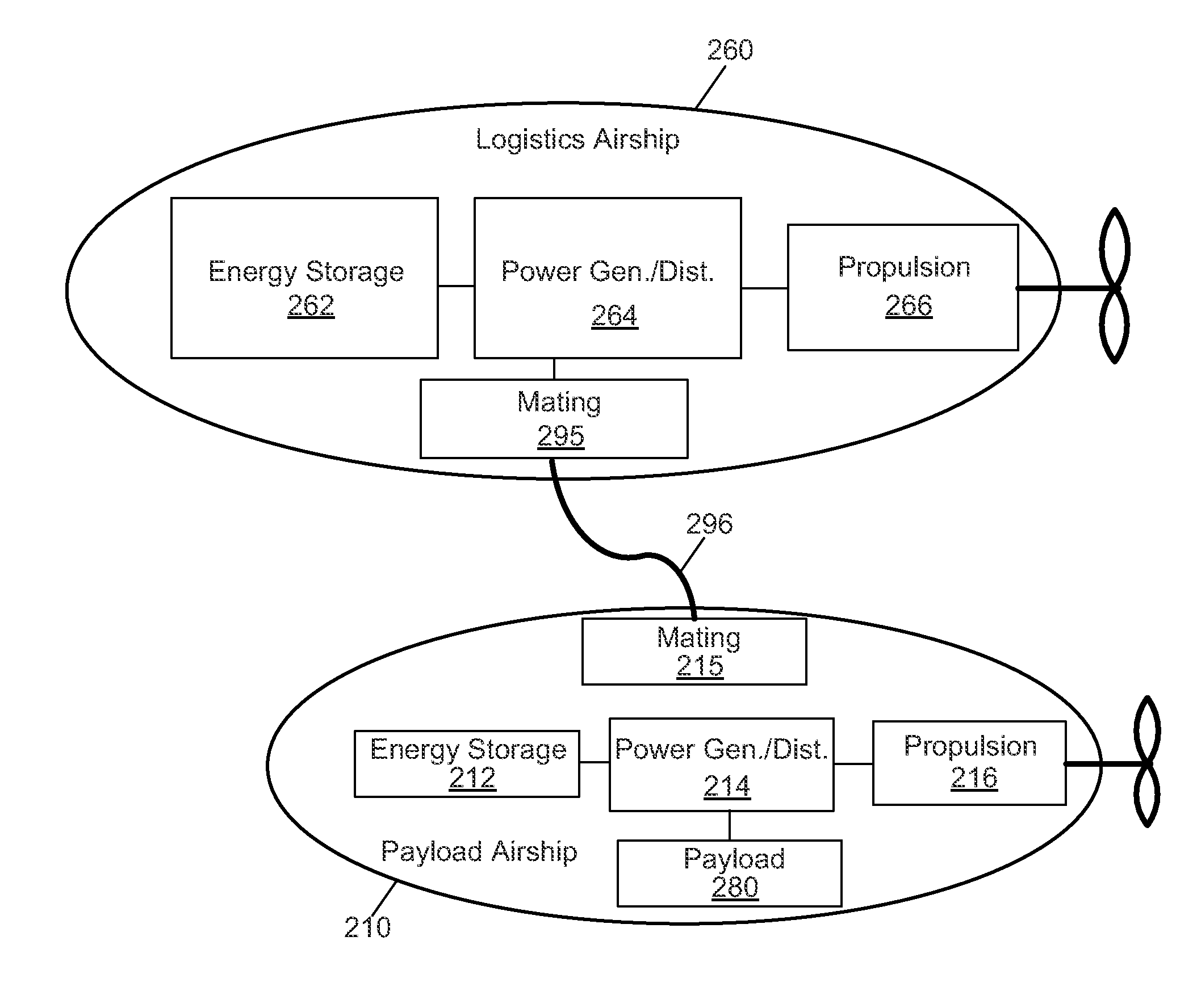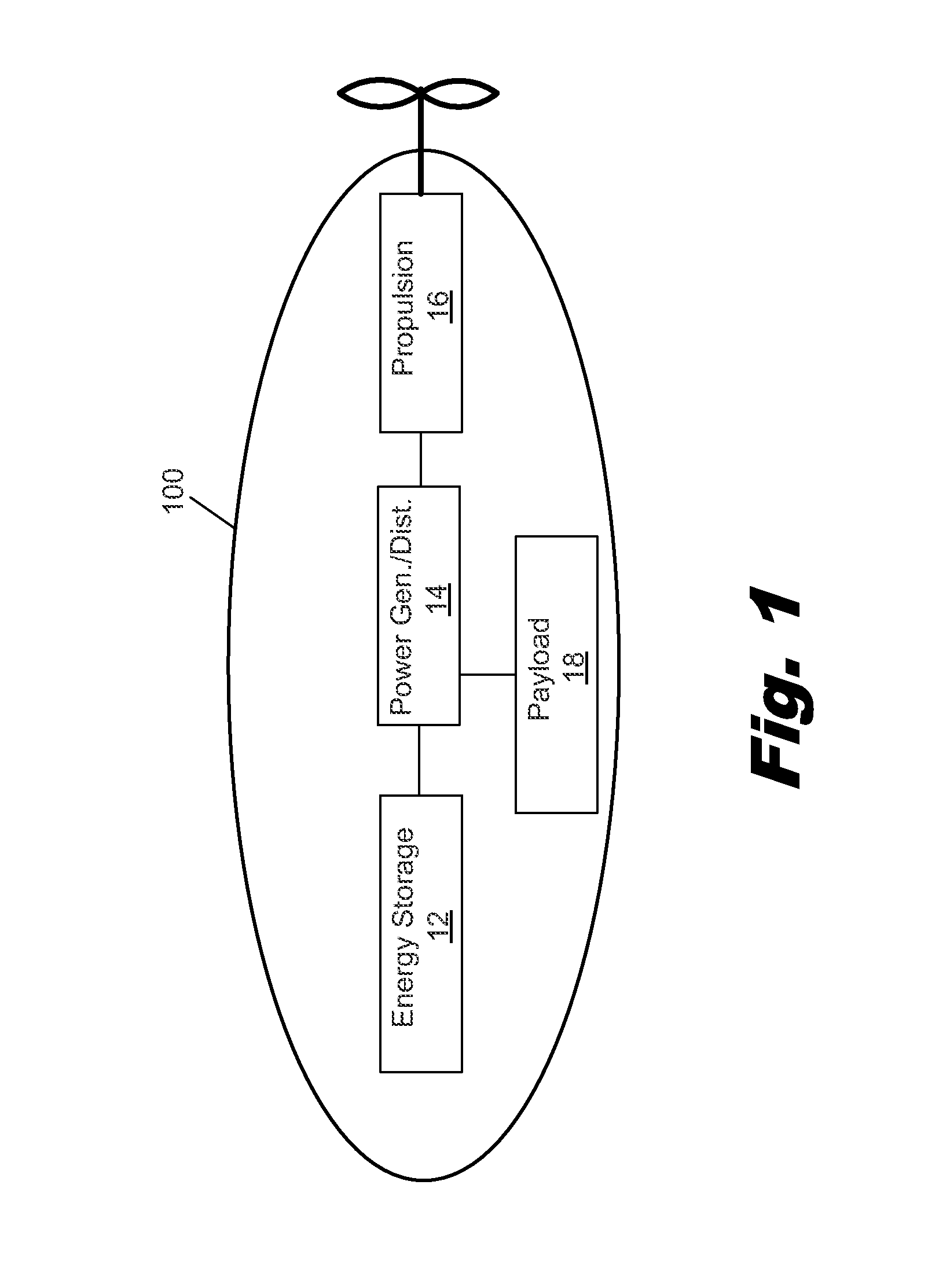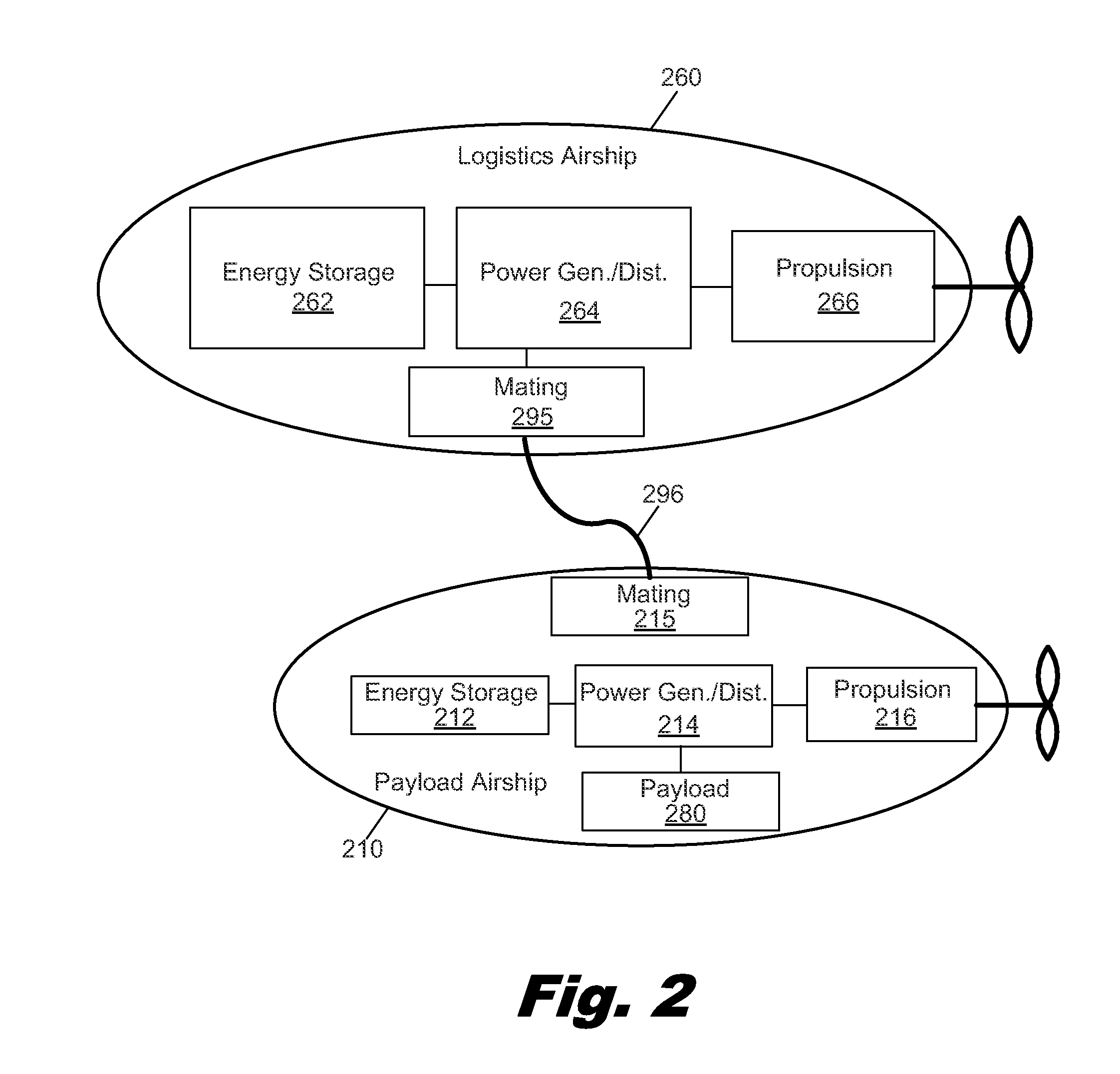Systems and Methods for Long Endurance Airship Operations
a technology of airships and airframes, applied in balloon aircrafts, convertible aircrafts, vehicles, etc., can solve the problems of increasing the risk of damage or loss of aircraft and payload, increasing the cost and risk of aircraft damage or loss, and reducing the aerodynamic force. , the effect of minimizing the requirements for operating and/or stationkeeping power
- Summary
- Abstract
- Description
- Claims
- Application Information
AI Technical Summary
Benefits of technology
Problems solved by technology
Method used
Image
Examples
numerical example
[0347]This section provides an exemplary sizing exercise for one embodiment of the inventive concept. It is not intended as a final or refined point design, which in any case would require a detailed consideration of currently-available materials and construction techniques, as well as detailed simulations of intended missions in the intended environments; instead, it is intended to expose some of the design considerations and tradeoffs particularly involved in the inventive concept.
[0348]For this sizing exercise, the payload airship, and the shuttle intended to resupply lifting gas to the upper airship, are assumed to be roughly spherical in shape. The payload airship is assumed to be mated to the front (or bow) of the lower airship 2310. As a consequence, the payload airship does not support a parachute. Instead, the lower airship 2310 supports both a parachute and a parafoil generally consistent with the concepts described in FIGS. 16-18.
[0349]The payload airship is sized first. ...
PUM
 Login to View More
Login to View More Abstract
Description
Claims
Application Information
 Login to View More
Login to View More - R&D
- Intellectual Property
- Life Sciences
- Materials
- Tech Scout
- Unparalleled Data Quality
- Higher Quality Content
- 60% Fewer Hallucinations
Browse by: Latest US Patents, China's latest patents, Technical Efficacy Thesaurus, Application Domain, Technology Topic, Popular Technical Reports.
© 2025 PatSnap. All rights reserved.Legal|Privacy policy|Modern Slavery Act Transparency Statement|Sitemap|About US| Contact US: help@patsnap.com



